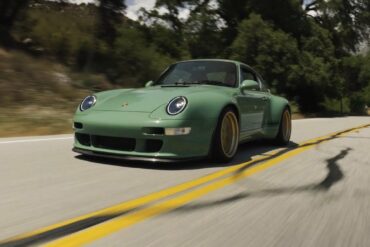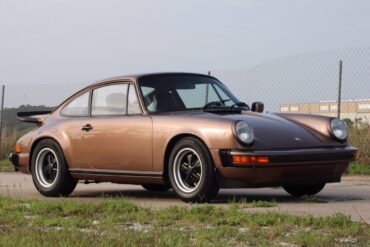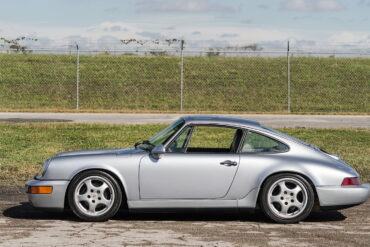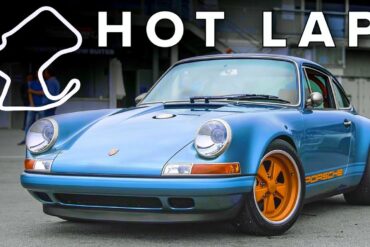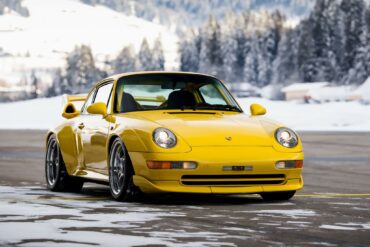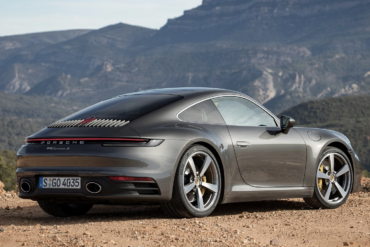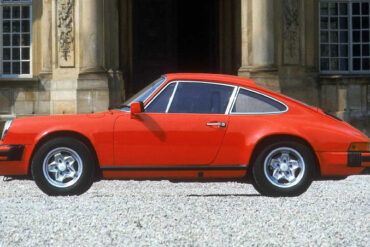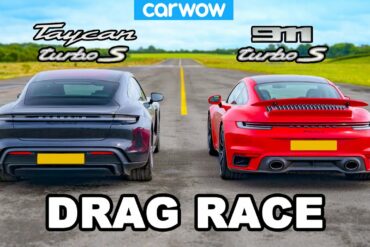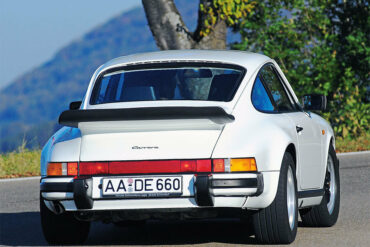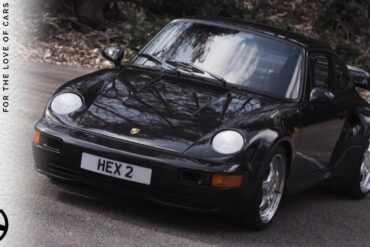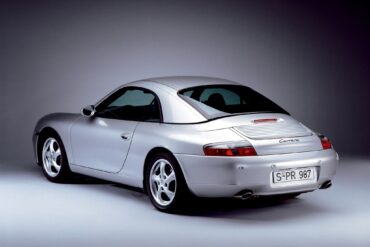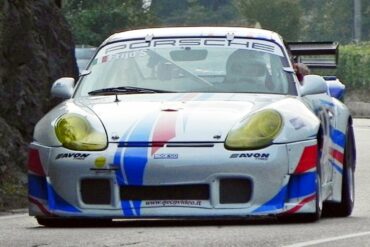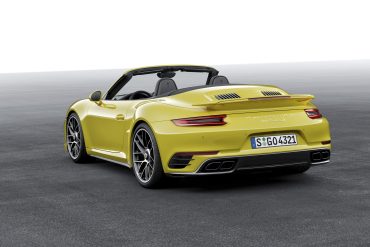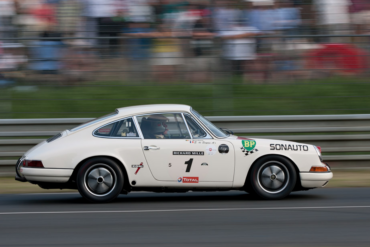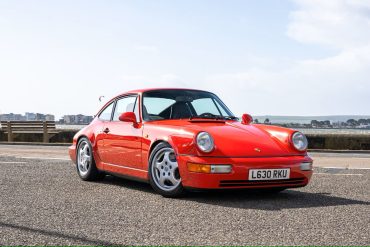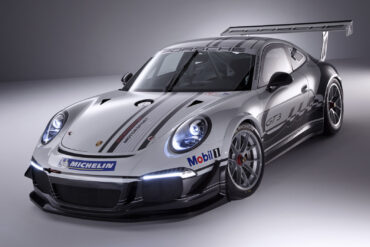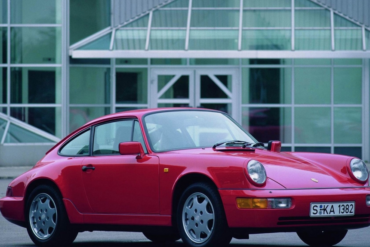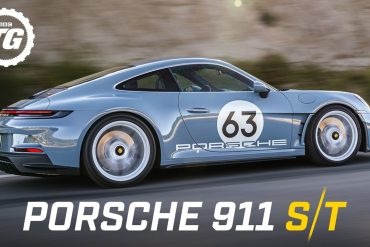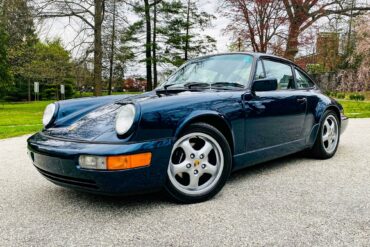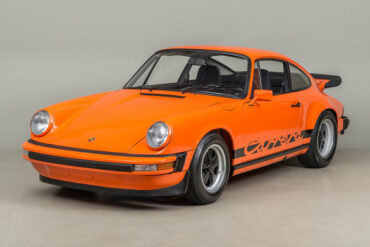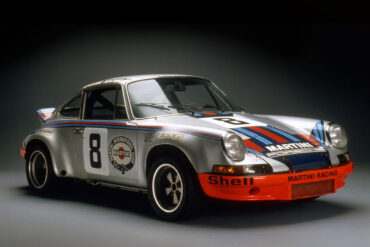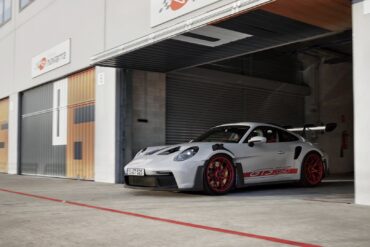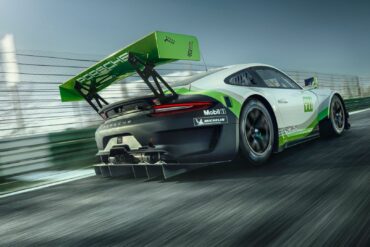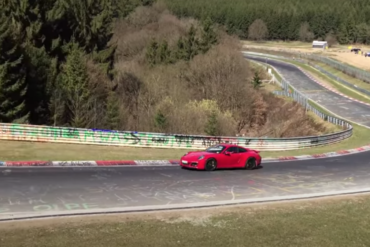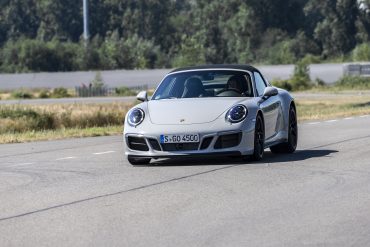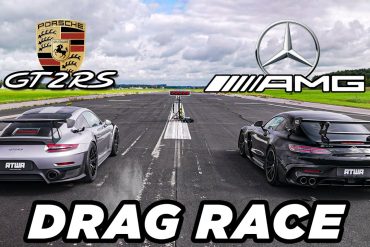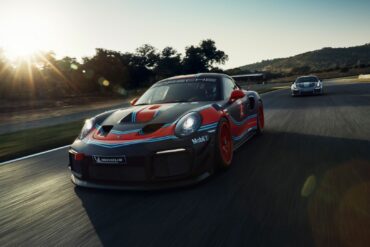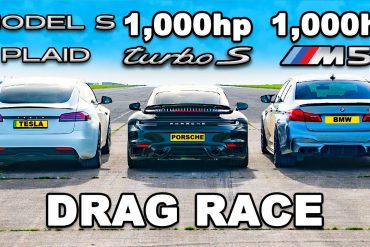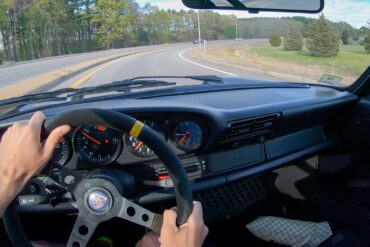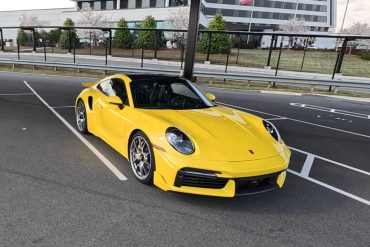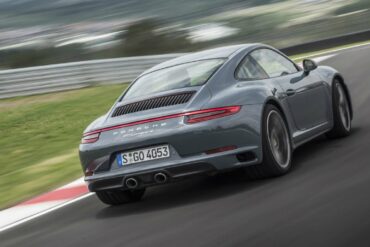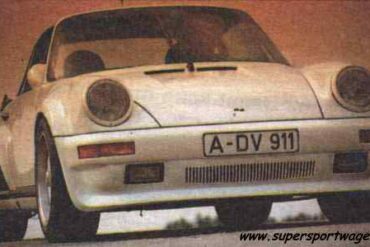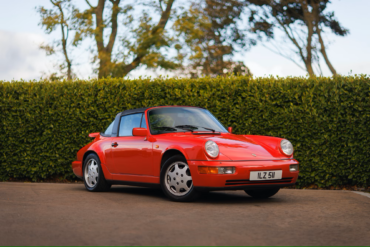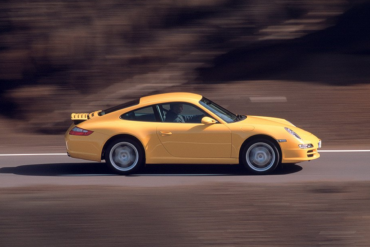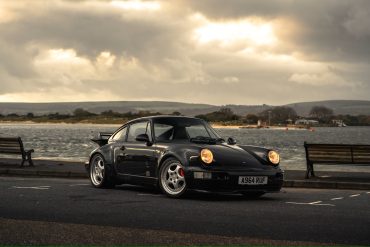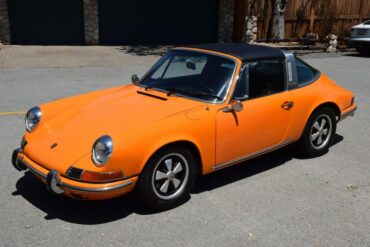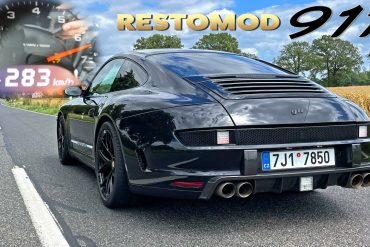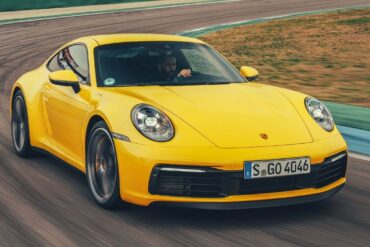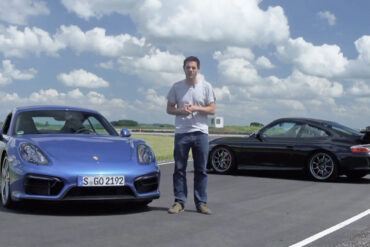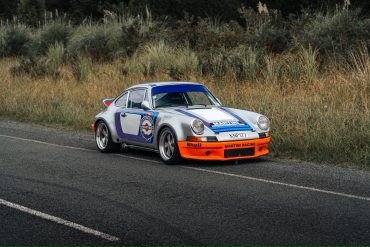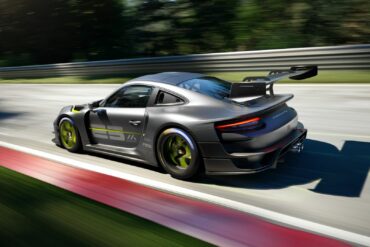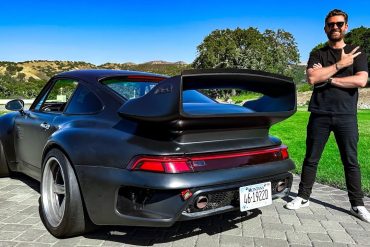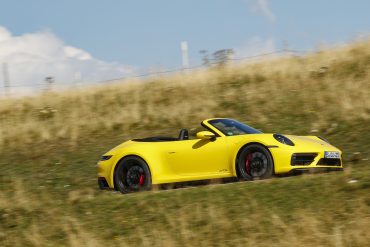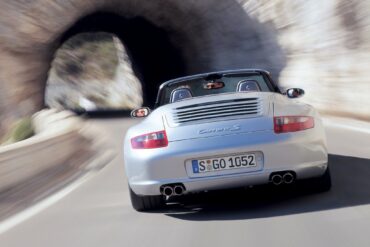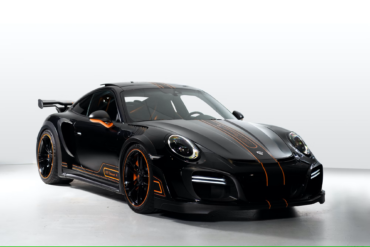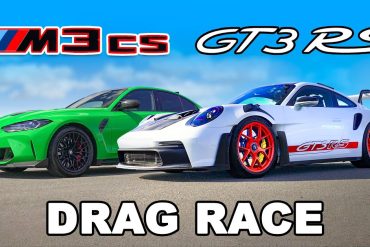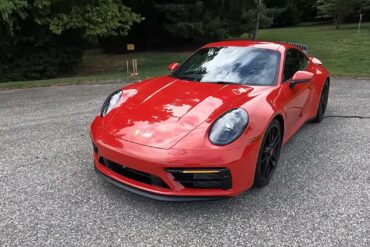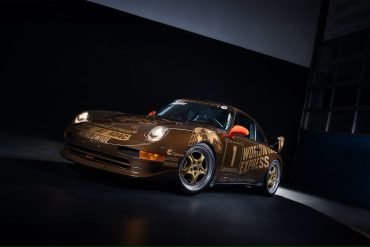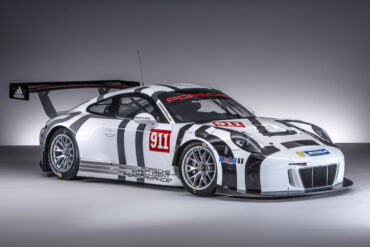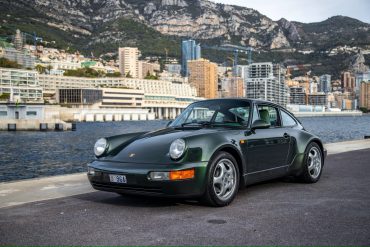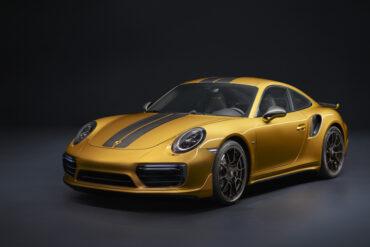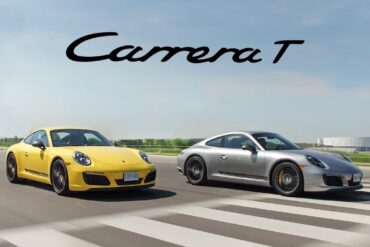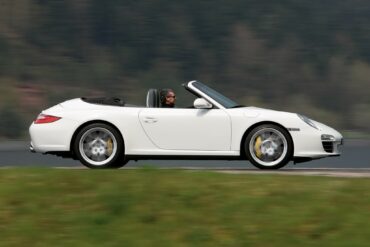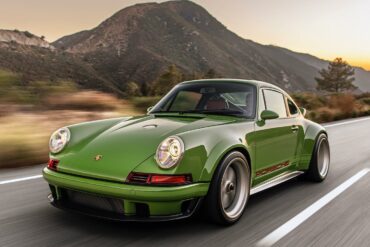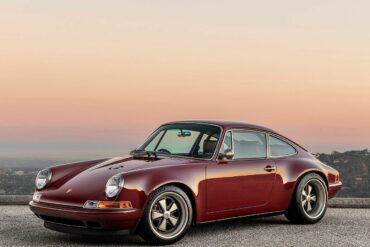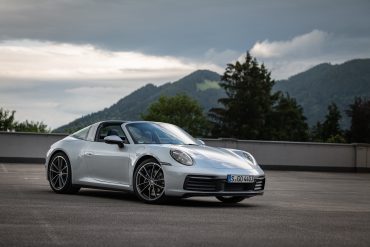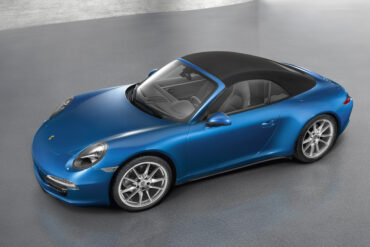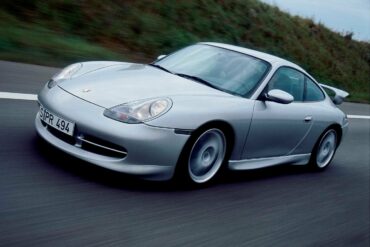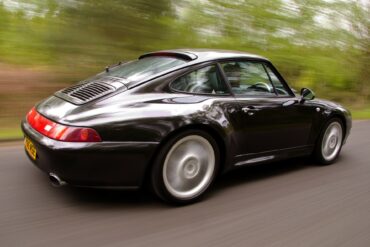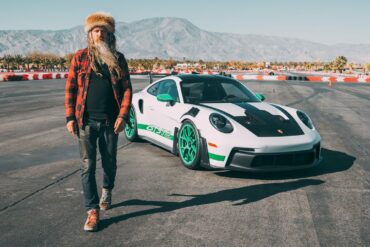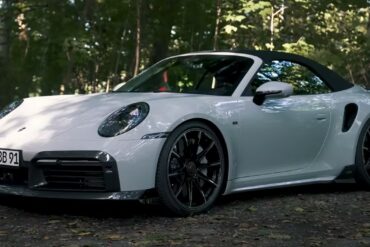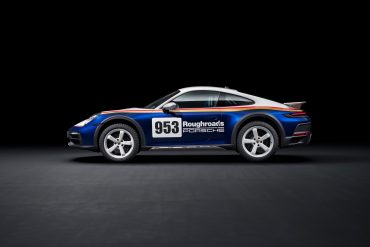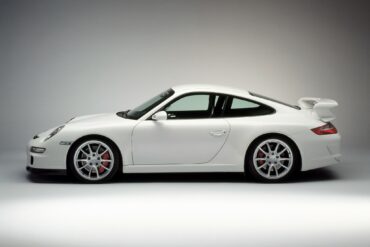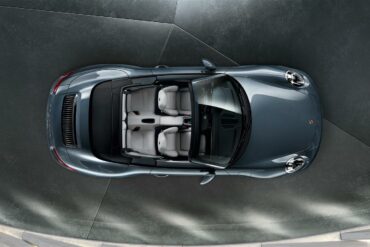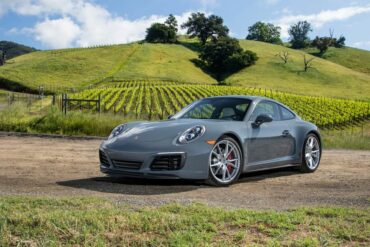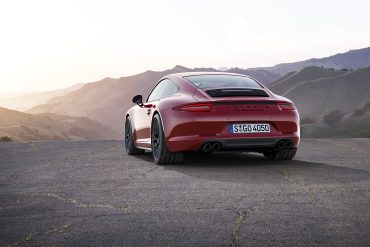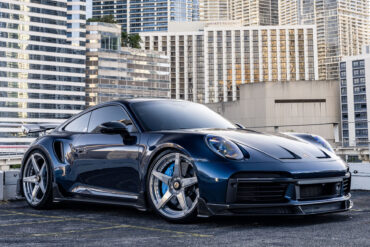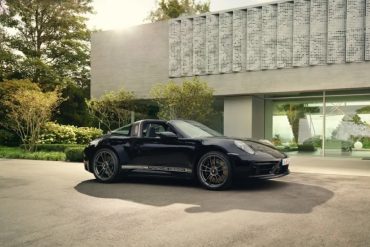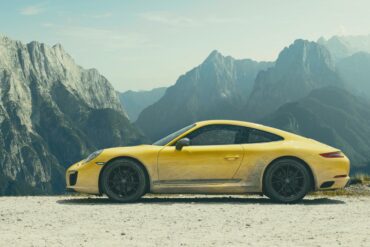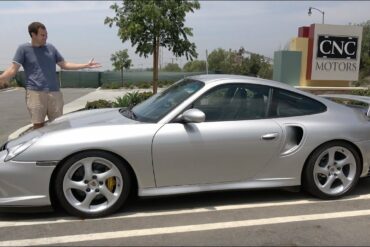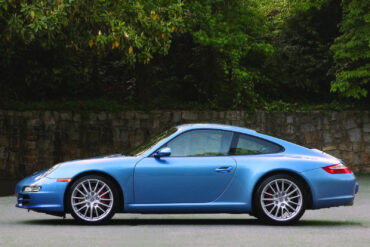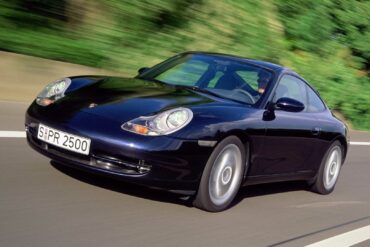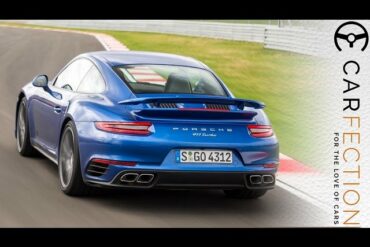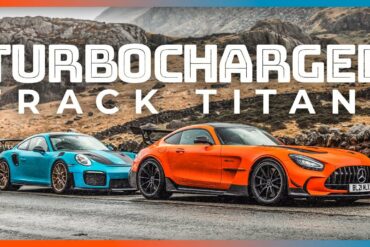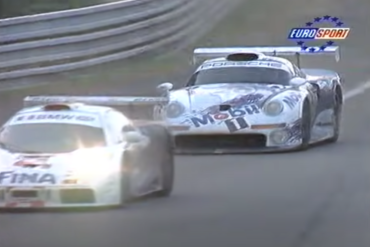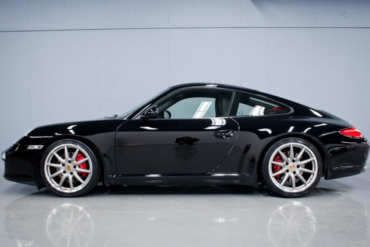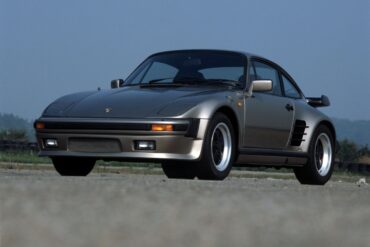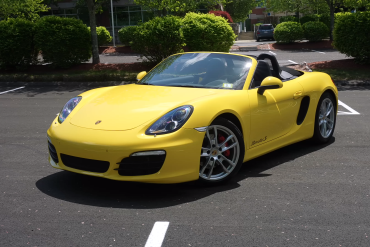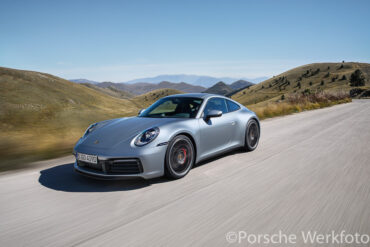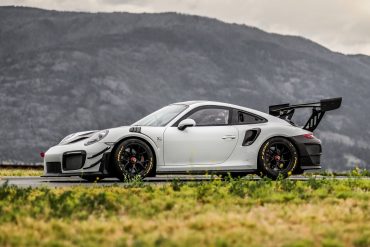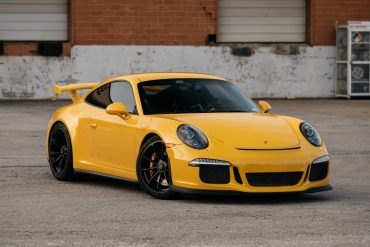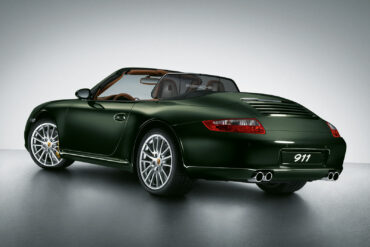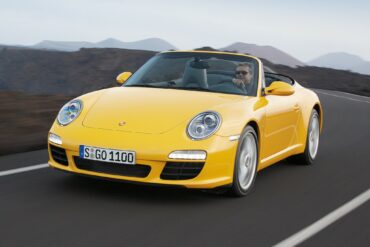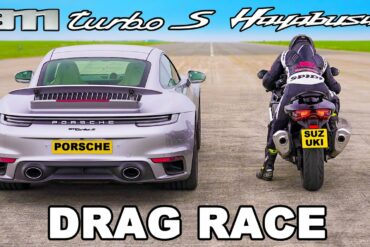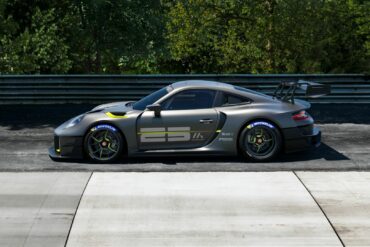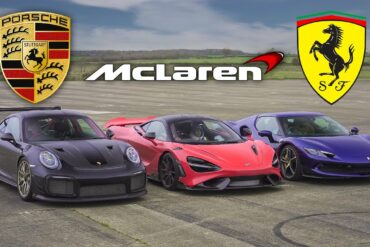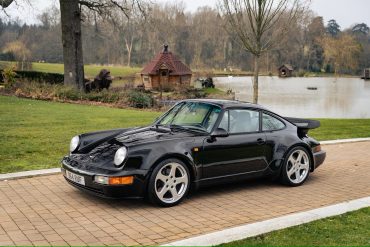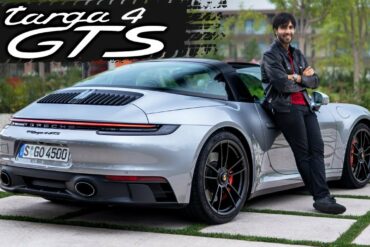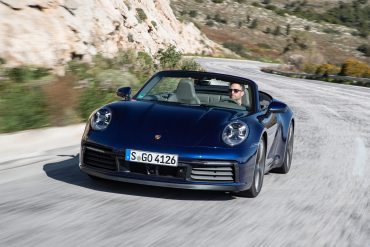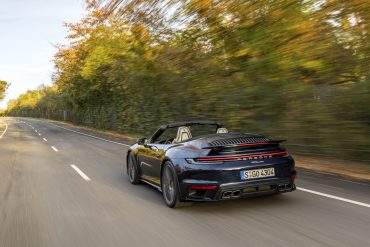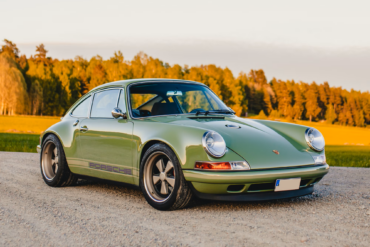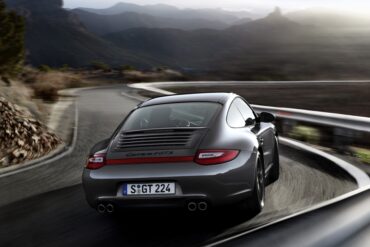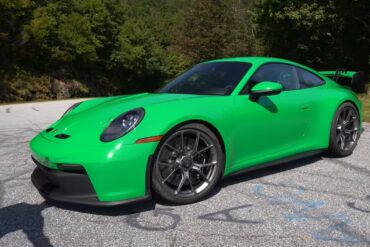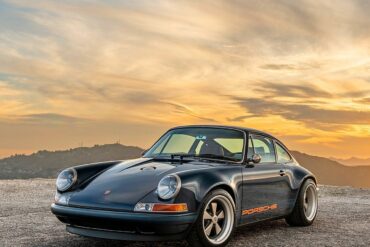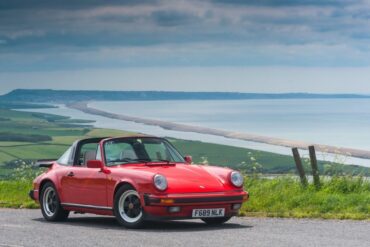The Gunther Werks 993 The Drive returns to the Gunther Werks headquarters to get an insider’s look at the new...
Porsche 911 (G, H, I & J) Technical Specifications & Model Comparison (European Variants) Comparison: European specs 911 MY1974-1977 Comparison:...
Porsche Option Codes – Porsche 911 (1993 Model Year) Looking to decode your 1993 Porsche 911 option codes? Want to...
What An Engine Noise! You might not ever get the chance to drive a Porsche 911 as Reimagined by Singer...
This rare 1996 Porsche GT2, originally designed for GT2 class racing, is based on the 993 Turbo. It features widened...
2023 Porsche 911 Carrera S (992) Technical Specifications PDK 992 Carrera S Specs Model 992 911 Carrera S Engine Engine layout...
Porsche 911 (G-Body) Paint Color Options This post outlines all the color options for the original G-Body generation Porsche 911...
New Tech vs Old Tech Showdown It’s time for the Porsche showdown you’ve all been waiting for… Porsche 911 Turbo...
1984 – 1989 Porsche 911 Carrera 3.2 Technical Specifications USA-Market Cars Engine USA (1984 – 1986) USA (1987 – 1989)...
Ultra Rare, Ultra Cool Have you ever seen a 911 Flatnose before? Neither had we. Here’s the story of one...
2001 Porsche 911 Carrera Cabriolet (996) Technical Specifications Engine Type Flat 6 Induction Normally-aspirated Cooling Water-cooled Valvetrain Double overhead camshafts...
Turn Up the Volume to the Perfect Flat 6 Screaming Sounds This video is about a couple of Porsche 996...
2017 – 2019 Porsche 911 Turbo S Cabriolet (991.2) Pictures & Gallery ...
1968 Porsche 911 TR Technical Specifications Configuration Type 901/22 B6 Location Rear, longitudinally mounted Construction aluminium block and head Displacement...
In tribute to the iconic 1973 911 Carrera RS, Porsche applied a similar strategy to craft a lightweight version of...
The new Porsche 911 GT3 Cup is powered by a 3.8-litre six-cylinder flat engine. It generates 460 hp (338 kW) at 7,500 revs, surpassing the predecessor by 10 hp. A six-speed dog-type gearbox developed by Porsche Motorsport which is operated via shift paddles at the steering wheel for the first time in a Porsche brand trophy race car transmits the power to the rear axle. The single piece race wheels with centre mount were also new.
Porsche added the rear wheel drive Carrera 2 variant to the range in 1990. It was developed alongside the 964 Carrera 4, Porsche waited a year to release the Carrera 2 as a 1990 model year car. Like the Carrera 4, the Carrera 2 was available as a coupé, Targa or Cabriolet. Overall, the Carrera 2 packed almost the same technical specifications as the Carrera 4 model. The engine was the same 3.6 liter unit which produced 250 horsepower and a maximum speed of 162 mph. Looked like C4 but was 200 lb lighter and more fun to drive.
A 60th birthday is a significant milestone, and Porsche has commemorated the occasion with the 911 S/T, a limited-edition sports...
1991 Porsche 911 Carrera 2 Coupe (964) Technical Specifications Engine Type Flat 6 Induction Normally-aspirated Cooling Air/oil-cooled Valvetrain Single overhead...
1974 – 1976 Porsche 911 Carrera MFI Technical Specifications Production Years 1974 – 1976 Built At Stutgart, Germany Production 1647...
Most Porsche fans know little about this epic wide-bodied 911 based race car. While the iconic 2.7 RS is every fan boys...
Arguably the most extreme 911 to be build as a production car for the road and track. The most significant improvements made to the RS—over both the 992 GT3 and the previous-gen 991 GT3 RS—were applied to the aerodynamics and chassis departments of the car. The new 911 GT3 RS is even more optimized for track use than its predecessors. The spontaneously responsive, high-revving four-litre, six-cylinder boxer engine has proven ideal for use at track days and club sport events.
(2019-2020) Porsche 911 GT3 Cup (991.2) Technical Specifications Concept Single-seat customer race car, basis: 911 GT3 RS (991.2) Engine Water-cooled...
Porsche 911 Carrera GTS Nordschleife HOT LAP 7.24 min Sport auto test driver Christian Gebhardt in the Porsche 991.2 Turbo...
2017 Porsche 911 Targa 4 GTS (991.2) Technical Specifications Engine Engine layout Rear Engine Engine type Boxer, twin-turbo Cylinders 6 Valves...
Porsche and Mercedes-AMG have been engaged in a captivating rivalry over the past few years, each striving to create the...
This car was officially called as the 911 GT2 RS Clubsport, but the name is rather misleading. The car was not built for the GT2 racing class which is long extinct and club sport has stood for Porsche club track days while this non-streel-legal car is a real racing car. Finally, the car was based on the 991 GT2 RS, which already had the Clubsport version. So, in order to understand what is what, we call it "991 GT2 RS Clubsport racing version". The 991 GT2 RS engine with 515 kW was powerful enough, so it was not tuned.
In a recent drag race organized by Carwow, three supercars were pitted against each other is a series of drag...
911 3.2 Carrera POV Run Onramps and Highway driving in my Aircooled 1988 Porsche 911 3.2 Carrera. Be sure to...
The current Turbo S comes with an all-new, 3.8 liter boxer six with two variable turbine geometry (VTG) turbochargers. The...
2016 – 2019 Porsche 911 Carrera 4 Coupe (991.2) Pictures & Gallery...
1990 RS 911 Turbo In Detail submitted by Richard Owen price $ $207 058 engine Turbocharged Flat-6 valvetrain SOHC displacement...
Collecting Cars is auctioning a stunning example of the 964-generation Porsche 911 Carrera 2 Targa. This particular example is offered...
2008 Porsche 911 Carrera (997) Technical Specifications Engine Type Flat 6 Induction Normally-aspirated Cooling Water-cooled Valvetrain Double overhead camshafts Injection...
In 1993, the 964 Turbo introduced an entirely new engine configuration to critical acclaim. The engine’s displacement was increased to...
1970 – 1971 Porsche 911 T Targa 2.2 (LWB) Technical Specifications Induction Normally-aspirated Cooling Air/oil-cooled Valvetrain Single overhead camshaft Injection...
Earlier this month, Edit Automotive has unveiled its vision of the Porsche 911 named the g11, an intricately crafted sports car predicated on...
First Drive in the 992 Carrera 2S Doorhandles that pop out? Cupholders that bump your elbows? Pinky fingers getting trapped?...
Evo Track Battle in a 996 GT3 vs Cayman GTS The all-new Porsche Cayman GTS could be the best sports...
This 964-generation Porsche 911 Carrera 2 has been elegantly transformed into a tribute to the iconic RSR model. Externally, it...
How the RS differs from lesser 911s The 1973 Porsche Carrera RS is instantly recognizable thanks to its distinctive “Carrera”...
2021 Porsche 911 GT2 RS Clubsport 25 (991.2) Technical Specifications What drives us? The next victory. Even after 25 years,...
At the Monterey Car Week 2023, California-based specialist Gunther Werks revealed their latest creation, the Touring Turbo Edition Coupe. This...
2022 Porsche 911 Carrera GTS Cabriolet (992) Technical Specifications Model 911 Carrera GTS Cabriolet Design and cylinders Twin-turbo boxer 6 Number...
2006 Porsche 911 Carrera S Cabriolet (997) Technical Specifications Engine Type Flat 6 Induction Normally-aspirated Cooling Water-cooled Valvetrain Double overhead...
The 2017 Porsche 911 Turbo S GTStreet R by with its carbon-fiber body, huge double-decked rear wing, GT3 RS-style wheelarch...
The carwow crew organized a showdown between two German rivals: the Porsche 911 GT3 RS and the BMW M3 CS,...
It is Redline Reviews’ Editor in Chief Sofyan Bey to turn to give a review of – and fall in...
Based on the 993 Carrera 2 coupe, the 993 Cup 3.8 was developed at Porsche’s competition department to replace the...
2016 – 2018 Porsche 911 GT3 R (991.1) Pictures & Gallery...
This bespoke version of the ’30 Jahre’ model comes with the wide body of the 964 Turbo combined with a...
Introduced in June 2017, the new 911 Turbo S Exclusive Series is the most powerful all-wheel drive turbocharged member of...
Reviewing The Purist Porsche We go for a drive in the 2018 Porsche 911 Carrera T Manual and PDK....
2012 Porsche 911 Carrera 4S Cabriolet (997.2) Technical Specifications Engine Type Flat 6 Induction Normally-aspirated Cooling Water-cooled Valvetrain Double overhead camshafts Injection...
Singer Vehicle Design – Unico Commission Today, we take a closer look at the Singer Vehicle Designs Unico Commission. The...
Singer Vehicle Design – Kensington Commission Today, we take a closer look at the Singer Vehicle Designs Kensington Commission. First...
While the base Targa isn't the most dynamic 911, it will suit a certain buyer well. If you want the sexiest looking 911 that is a great all-rounder and you don't plan on spanking it all the time, then this is a great 911 to buy. Even in lower-powered form, the 3.0-liter is a peach of an engine. Torquey across its rev range, it responds quickly to prods of the throttle. The real problem with the Targa is the added weight and the structure, which hurts it dynamically.
The 1988 Porsche 911 Carrera underwent a backdating process and received an RWB widebody kit by Porsche tuner Akira Nakai....
2013 – 2015 Porsche 911 Carrera 4 Cabriolet Pictures & Gallery ...
Porsche Option Codes – Porsche 911 (2000 Model Year) Looking to decode your 2000 Porsche 911 option codes? Want to...
1997 Porsche 911 Carrera S (993) Technical Specifications Engine Type Flat 6 Induction Naturally Aspirated Cooling Air/oil-cooled Valvetrain Single overhead...
The all-new Porsche 992 GT3 RS is arguably the most extreme 911 to be build as a production car for...
Watch this in-depth review on the interior and exterior design of the first Brabus and Porsche supercar, the Porsche Brabus...
2023 Porsche 911 Dakar (992) Pictures & Gallery ...
2009 Porsche 911 GT3 (997) Technical Specifications Engine Type Flat 6 Induction Normally-aspirated Cooling Water-cooled Valvetrain Double overhead camshafts Injection Port...
2018 Porsche 911 Carrera Cabriolet (991.2) Technical Specifications Engine Engine layout Rear Engine Engine type Boxer, twin-turbo Cylinders 6 Valves per...
2017 Porsche 911 Carrera 4S (991.2) Technical Specifications Engine layout Rear Engine Engine type Boxer, twin-turbo Cylinders 6 Valves per cylinder...
The folks at AutoTopNL managed to get their hands on a beautiful Porsche 964 Targa restomod built by Speed Service,...
2015 Porsche 911 Carrera GTS Coupe (991) Technical Specifications Engine layout Rear Engine Engine type Boxer-6 Cylinders 6 Valves per...
Reviewed & edited by Rex McAfee 3-D Printed Carbon Recognized worldwide throughout the automotive industry for their 3D-printed carbon fiber...
Porsche Design Group, a subsidiary of Porsche AG, is celebrating half a century of operations. What better way to mark...
To the untrained eye, the Carrera T may appear to be a bare-bones and sparingly equipped 911 at first glance. The purpose of the T is to create a driver-focused 911, equipped with only the necessities required to appeal to those of a purist’s ilk. The Carrera T employs the same power plant used in the current base Carrera - a twin-turbocharged 3.0L flat-six with 370 horsepower and 331 lb-ft of torque. A 7-speed manual transmission comes standard with the T, along with a shorter final-drive ratio and the limited-slip differential. Porsche Sport Exhaust (PSE) is also standard. PASM sport suspension comes standard in the T, which lowers the chassis by 0.4 inches relative to the base Carrera and allows for two modes of dampening.
Doug Demuro Drives the 996 GT2 The 996 Porsche 911 GT2 is my favorite 911 — and today I’m going...
2006 Porsche 911 Carrera S Club Coupe (997) Technical Specifications Engine Type Flat 6 Induction Normally-aspirated Cooling Water-cooled Valvetrain Double...
Porsche 911 (996) (1997 – 2005) Story & History Type 996 – The 5th Generation Porsche 911 Premiere: GT1 May...
Carfection Reviews the 911 Turbo S (991.2) The new 911 Turbo S is a very, very fast car. Its predecessor...
In a recent video, YouTube channel Supercar Driver compare a Porsche 911 GT2 RS against Mercedes-AMG GT Black Series. These...
Performance, Engine, Styling & More The Porsche 911 GT3 Touring is a race-oriented sports car that has been absent from...
Porsche GT1 versus McLaren F1 GTR Great battle between the Porsche GT1 and the McLaren F1 GTR at Le Mans...
Porsche Option Codes – Porsche 911 (2009 Model Year) Carrera/Carrera S/Carrera 4/Carrera 4S, Coupé/Targa/Cabriolet Looking to decode your 2009 Porsche...
1981-1989 Porsche 911 Turbo 3.3 SE ‘Flachbau’ Pictures & Gallery ...
Unlike its Boxster brother, the S version of the mid-engined Porsche roadster offered a 3.4-liter unit from its predecessor, but...
The new Type 992 Porsche 911 Carrera 4S There was a sensation on the West Coast of America last night...
The 911 GT2 RS Clubsport made its debut alongside the new 992-generation 911 at the 2018 Los Angeles Auto Show,...
Porsche introduced the 991 GT3 for the 2014 model year, as follow up to the multiple 997 GT3 variants. The...
2008 Porsche 911 Carrera Cabriolet (997) Technical Specifications Engine Type Flat 6 Induction Normally-aspirated Cooling Water-cooled Valvetrain Double overhead camshafts...
The 911 Carrera Cabriolet is a true Porsche, from top to bottom. Like the rest of the range, the base Cabriolet got a mild refresh in terms of design that made it more modern and a little more crisp. The engine was upgraded, now with direct direction. The direct-injection 3.6-liter engine also got new air filters, a more free-flowing exhaust system, and reduced engine friction, making it more powerful than before. It has peak power of 339 bhp @ 6500 rpm and torque of 287 ft lbs @ 4400 rpm. The Carrera equipped with PDK covers 0-60 mph in 4.5 seconds and runs to a top speed of 179 mph.
Bike vs Supercar Drag Race It’s time for a supercar vs superbike DRAG RACE! Mat’s lining up in his Porsche...
2021 Porsche 911 GT2 RS Clubsport 25 Pictures & Gallery...
The Porsche 911 GT2 RS is an extremely powerful car with 700 hp, making it one of the quickest Porsches...
This Porsche RUF 911 RCT, from the 964 era, serves as the origin of the RUF RCT model and was...
Is This The Perfect Daily 911? A very classy spec vs the super vibrant coupes we tried, our 992 Targa...
2022 Porsche 911 Carrera 4S Cabriolet (992) Technical Specifications PDK 992 Carrera 4S Cabriolet Specs Model 992 911 Carrera 4S Cabriolet...
All Porsche 911s are turbocharged these days but the Turbo model is something special. It gets the twin-turbo 3.7-liter flat six with tons of power and a huge $33,000 savings over the Turbo S. Thanks to an output of 573 hp, marking an increase of 32 hp over the predecessor, the new 911 Turbo Cabriolet accelerates from 0 to 60 mph in 2.8 seconds (0.2 seconds faster than before). The Turbo Cabriolet basically handles like a coupe.
Singer Vehicle Design has established itself as one of the premier names in the world of custom Porsche 911s. The...
2012 Porsche 911 Carrera 4 GTS Coupe (997) Technical Specifications Engine Type Flat 6 Induction Normally-aspirated Cooling Water-cooled Valvetrain Double overhead...
Watch Joe excitedly go over all the bells and whistles in the new 2022 Porsche 911 GT3. It is a...
This is why every car enthusiast should consider a 997 Porsche Carrera S ...
Singer Vehicle Design – Tennessee Commission Today, we take a closer look at the Singer Vehicle Designs Tennessee Commission. This...
1984-1989 Porsche 911 Carrera 3.2 Targa Pictures & Gallery...


